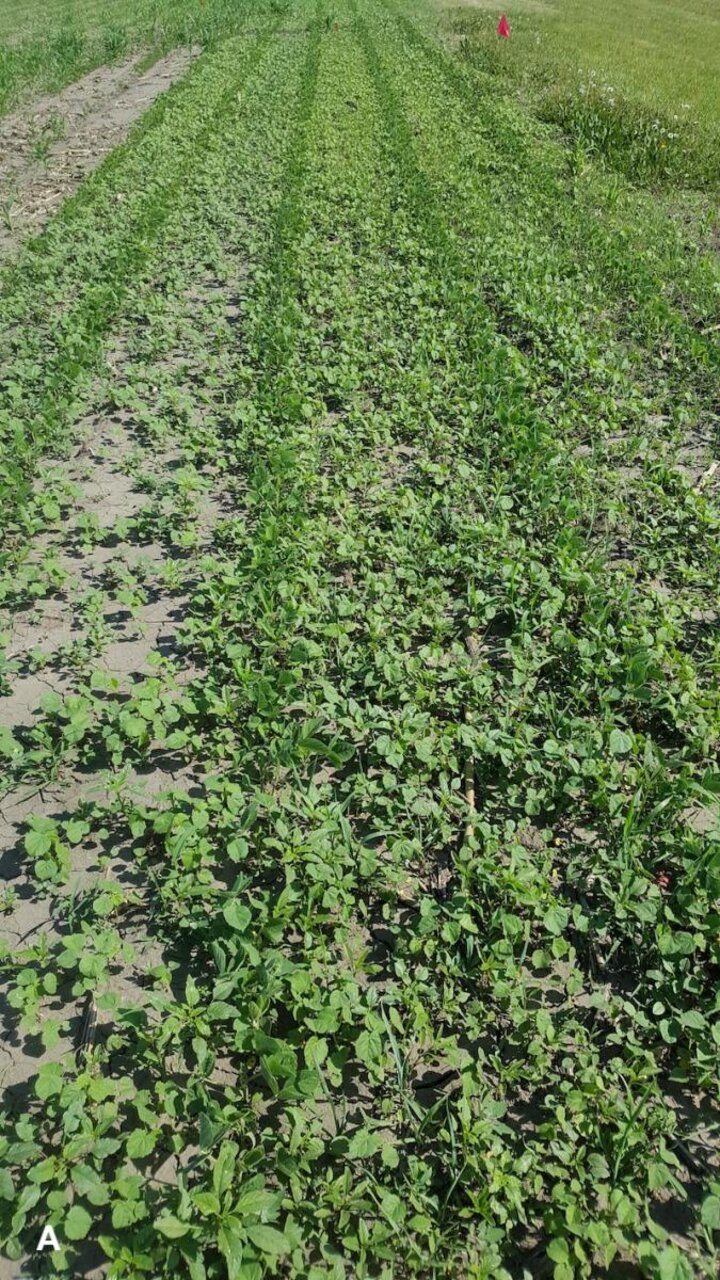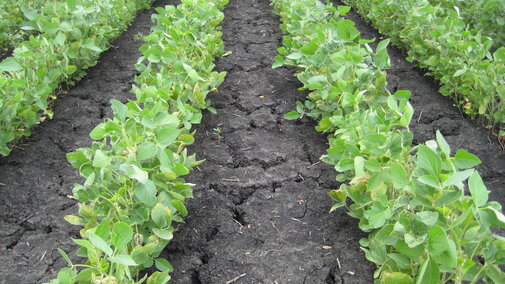Applying a pre-emergence herbicide with multiple sites of action is particularly important in fields where herbicide-resistant weeds are present or suspected. Few new herbicides registered in soybean are a premix of herbicides with different sites of action. An effective pre-emergence application can go a long way toward controlling a problem weed population, especially when post-emergence herbicide options are limited or limited in effectiveness in soybean (Figure 1 A and B).


Post-emergence herbicide options for weed control in soybean are limited, particularly where glyphosate-resistant weeds are a problem. Six weed species in Nebraska have now been confirmed resistant to glyphosate and most of them are widespread. Summer annual weed species such as waterhemp, Palmer amaranth, velvetleaf, common lambsquarters, and foxtails emerge at the same time as soybean and can be particularly troublesome in some parts of Nebraska. In addition, many populations of these weed species in Nebraska are glyphosate-resistant. Weed management programs using other herbicides in addition to glyphosate are needed to manage these populations.
University of Nebraska-Lincoln research has shown that adding a residual herbicide helps keep fields free of yield-robbing weeds longer and improves yield and weed resistance management practices. For example, a two-year university study demonstrated season-long control of glyphosate-resistant common waterhemp when a pre-emergence herbicide with multiple sites of action was applied and followed by a post-emergence herbicide (Figure 2 A and B).


Before you consider applying herbicide, it is important to pay attention to label restrictions. There are several herbicides that cannot be applied in certain areas of Nebraska based on number of factors such as high soil pH, dry soil conditions, potential for carryover injury, etc. For example, any herbicide with chlorimuron-ethyl cannot be applied west of US Hwy 281 and north of US Hwy 30 (Table 1).
| Herbicide Trade Name | Active ingredient | Site of action group # | Label restriction |
|---|---|---|---|
| Authority XL | Chlorimuron/sulfentrazone | 2/14 | Do NOT apply west of US Hwy 281 and north of US Hwy 30; Do NOT use on soils with soil pH greater than 7.6; Do NOT follow Authority XL with a post-emergence application of another chlorimuron containing herbicide the same cropping season |
| Canopy | Chlorimuron/metribuzin | 2/5 | Do NOT apply west of US Hwy 281 and north of US Hwy 30 |
| Canopy EX | Chlorimuron/tribenuron | 2/2 | Do NOT apply west of US Hwy 281 and north of US Hwy 30 |
| Classic | Chlorimuron | 2 | Do NOT apply west of US Hwy 281 and north of US Hwy 30 |
| Envive | Chlorimuron/flumioxazin/thifensulfuron | 2/14/2 | Do NOT apply west of US Hwy 281 and north of US Hwy 30 |
| Fierce XLT | Chlorimuron/flumioxazin/pyroxasulfone | 2/14/15 | Do NOT apply west of US Hwy 281 and north of US Hwy 30 |
| Synchrony XP | Chlorimuron/thifensulfuron | 2/2 | Do NOT apply west of US Hwy 281 and north of US Hwy 30 |
| Trivence | Chlorimuron/flumioxazin/metribuzin | 2/14/5 | Do NOT apply west of US Hwy 281 and north of US Hwy 30; On soils with a composite pH greater than 7.0, do not exceed 6.0 oz/acre |
| Valor XLT/ Rowel FX | Chlorimuron/flumioxazin | 2/14 | Do NOT apply west of US Hwy 281 and north of US Hwy 30; On soils with a composite pH greater than 7.0, do not apply more than 2.5 oz/acre |

